Weaving napkins on a frame with nails
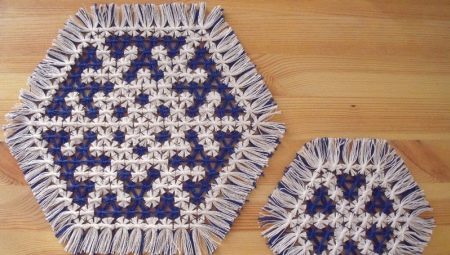
Weaving napkins on a frame with nails is a much less well-known version of needlework than scrapbooking or applique. However, the description of napkins without knitting on carnations and their weaving on a yarn frame according to the master class, step by step with your own hands, convincingly shows the merits of such an activity. Useful advice from experts should also be taken into account.
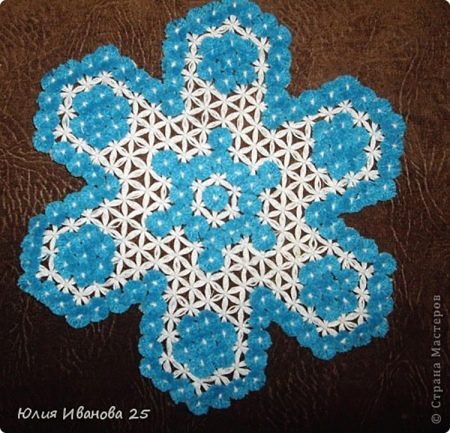
Features of thread napkins
All people strive to make their home more beautiful - both for the holiday and simply in everyday life. And homemade decorative items provide a great opportunity for that. With their help, you can easily make the room more comfortable and attractive. And for those who want to show real originality, a yarn napkin on a wooden frame with nails is best suited. Even beginner enthusiasts can do it in 5-7 hours if they act correctly.
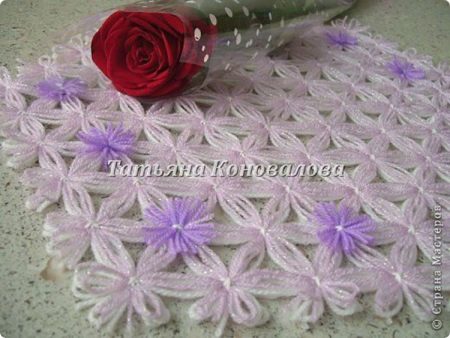
Weaving workshops
It is quite possible to make napkins on nails without knitting... The best option for work will be the use of two-color "iris" yarn. Important: making on a bar means hammering in nails at exactly the same distance. There should be approximately 0.5 cm between the fasteners and the inner edge.
This means that you have to choose a fairly broad base; the rest of the dimensions of the frame are determined to your taste.
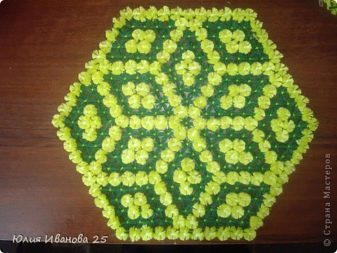
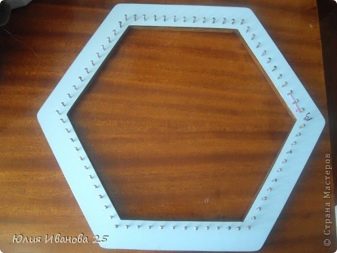
To make do-it-yourself wicker napkins step by step, you need:
- take a thread of any color, fix it on the second nail;
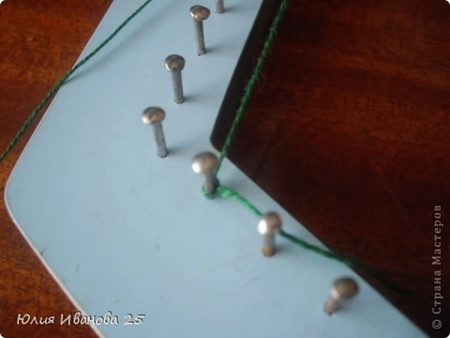
- pull this thread, fasten it on the opposite edge for the second or third nail;
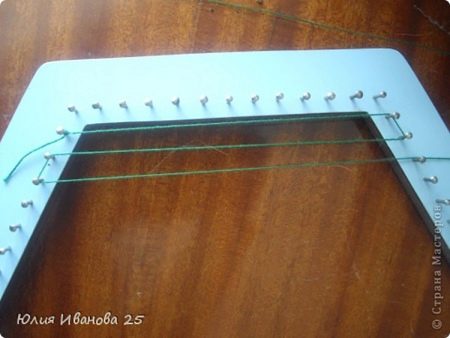
- go over to the original side again and hook the thread to the third nail, move to the opposite face;
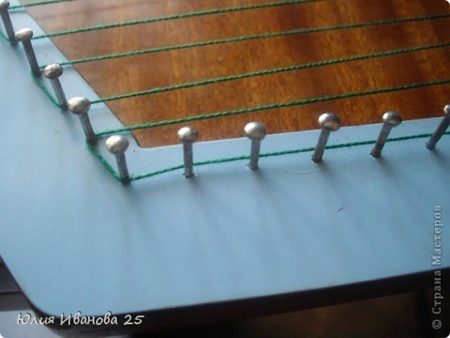
- continue to work until all the nails are enveloped;
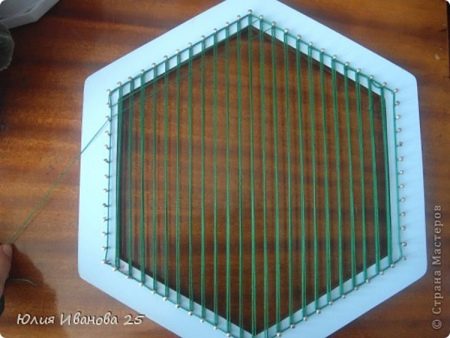
- weave the napkin further in the reverse order;
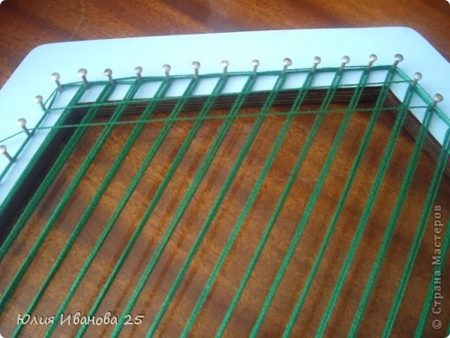
- make 6 layers in this way;

- having prepared the mesh, start forming the pattern on the reverse side, insert strong cotton fibers into the needles and tie into a knot;
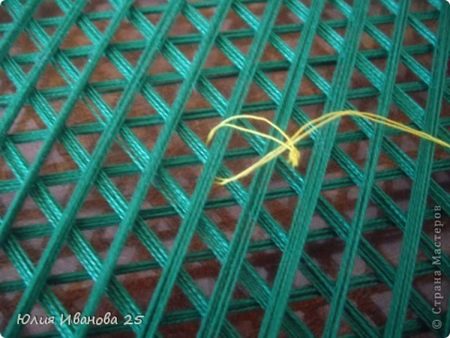
- push the needle into the cell;
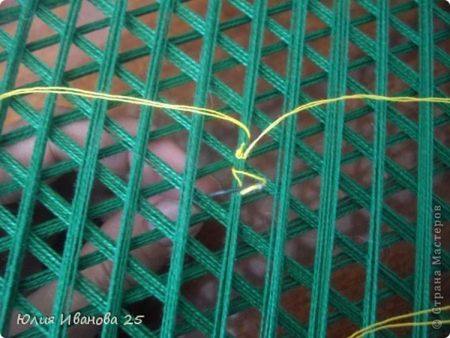
- apply 3 levels of the base, bring it all out through the opposite hole, tighten the loop on the needle. Repeat this until you get something like an asterisk.
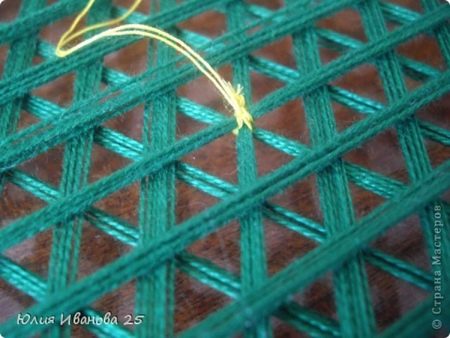
When it is there, you need to move on to new cells. insert strong cotton fibers into the needles and tie into a knot; In a new area, repeat the steps already described. Sometimes, when making a picture, you have to "jump" over several holes. In this case, the threads are cut and fastened to the required places.

If there is a shortage of cotton yarn, it is cut off, tied in several knots. The ends of the thread are tied. We need to continue working with new threads. Another fabric of a different color is applied as a new layer of mesh. This layer should have at least 10 rows; the more there are, the more magnificent the composition will be.
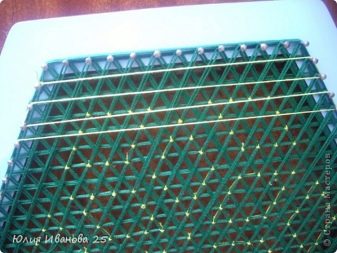
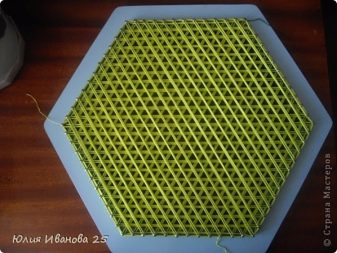
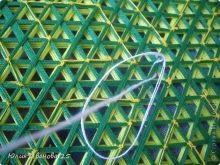
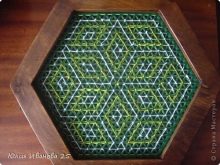
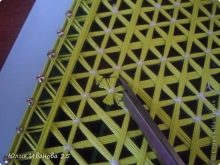
There is also an alternative scheme... For its implementation, a hexagonal frame with a side of 24 cm is used. The gap between the outer nails is 23 cm. Acrylic threads are preferred. Weaving begins with a knot that allows you to fix the thread on the support.
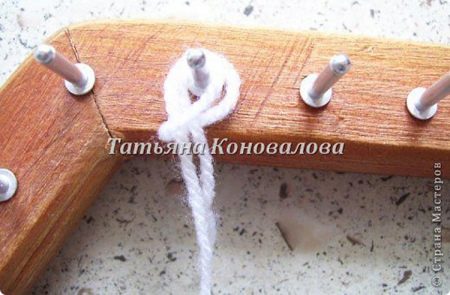
Next, the knot is folded in half and strung on the second nail. There it should be tightened. Carnations are wrapped in pairs. Better to do 2 or even 3 turns, in accordance with the thickness of the fibers. You need to carefully move between pairs of studs; wrapping is allowed both through one nail and each of them.

Further:
- perform 3 layers in succession;
- cut the thread;
- knit a knot;
- add fabric of a different color (3 layers of thread);
- form a beautiful composition.
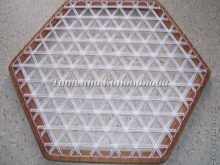
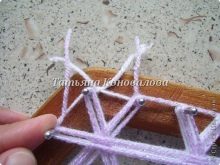
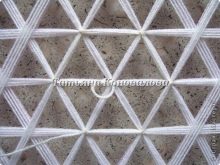
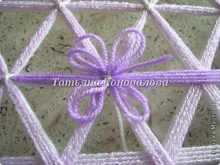
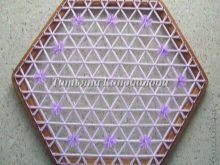
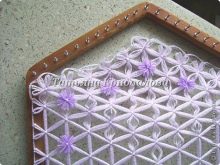
Another option is to get a loop and tighten on the first nail. Threads are wound in the first layer everywhere. The next layer is formed from threads running across. A very tight winding should be avoided, but a very weak coating should not be used. Decorative details are glued from the center at each place where the threads intersect.
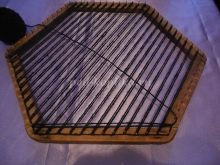
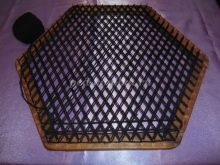
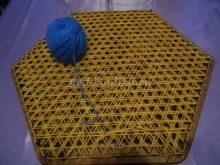
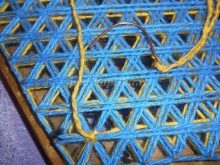
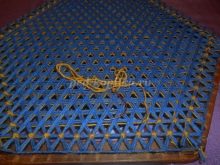
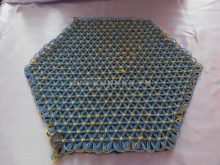
This technique allows you to make a variety of napkins, including those with a carved perimeter and made of multi-colored fabric.
Helpful hints
The frame must match the size of the product being created.
When making napkins made of synthetic fibers, it must be remembered that they are prone to strong stretching, and therefore the design should be twice as large.
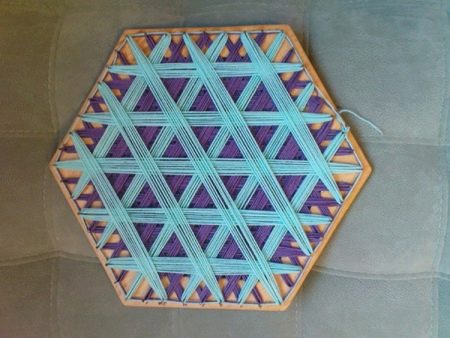
You can vary the density of weaving by hammering in nails with different densities. The threads used for the warp should be wound moderately tight. The finished composition can be removed from the frame and trimmed with fringes.
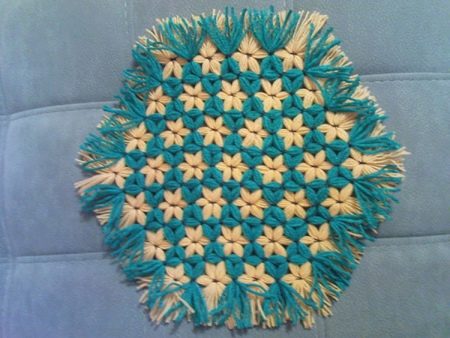
A detailed master class on weaving a napkin on a frame can be found in the following video.








